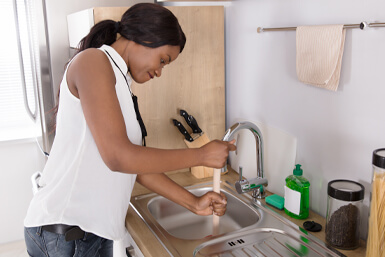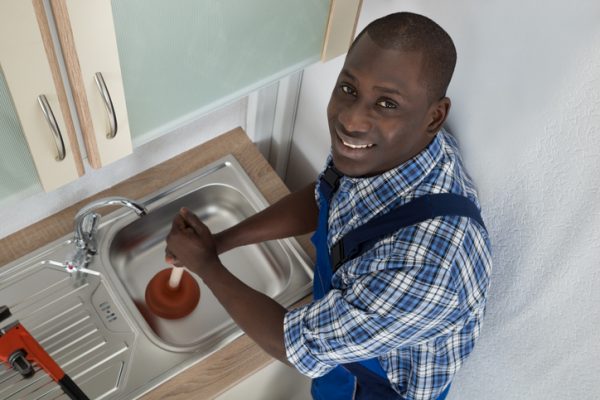Cracking the Code: 5 Secrets for Kitchen Sink Unclogging
Cracking the Code: 5 Secrets for Kitchen Sink Unclogging
Blog Article
What're your thoughts on Common Household Plumbing Issues?

Obstructed kitchen area sinks are among the most common water drainage problems property owners deal with. As well as what's even more, it's a undesirable and very awkward view. Imagine mosting likely to the sink to do your dishes as well as figuring out that the drain is clogged as well as water can not move down quickly.
Most stopped up drains are brought on by food debris, oil, soap, as well as fat particles. They block the sink as well as make it hard for water to drop the drainpipe quickly. While it is tempting to put a call through to the plumbings, there are a few DIY hacks you can try first before making that telephone call.
In this write-up, we will be taking a look at five easy steps you could require to release your cooking area sink from blockages and also save you from the pain as well as embarrassment of taking care of a stopped up kitchen area sink.
1. Use Boiling Water
When faced with a clogged sink, the first thing you must attempt is to put boiling water down the drainpipe. That has to do with the most simple solution to stopped up sinks as well as drains. Boiling water helps counteract the bits and also particles creating the blockage, particularly if it's oil, oil, or soap bits, and also oftentimes, it can flush it all down, as well as your sink will be back to regular.
Due to the fact that hot water could thaw the lines and also cause more damages, do not attempt this technique if you have plastic pipes (PVC). If you use plastic pipes, you may want to stick to utilizing a plunger to get debris out.
Utilizing this approach, activate the faucet to see just how water moves after putting warm water down the drain. Attempt the process once again if the blockage lingers. Nonetheless, the blockage could be a lot more persistent in many cases and also call for more than simply boiling water.
2. Perhaps it's the Garbage Disposal
In numerous instances, the obstruction might be due to a clog in the disposal. Use pliers rather.
You can explore the following alternative to unblock your kitchen area sink if this does not work.
3. Try a Plunger
You can attempt using a plunger if the trouble is not from the garbage disposal. Plungers are conventional home devices for this event, and also they can can be found in useful if you utilize them correctly. A flat-bottomed bettor is most ideal for this, however you can make do with what you have is a commode plunger.
Adhere to the list below easy steps to make use of the plunger properly:
Secure the drainpipe with a dustcloth as well as load the sink with some hot water
Place the bettor in position over the drainpipe and start diving
Check to see if the water runs openly after a few dives
Repeat the process until the drain is free
4. Baking Soda and also Vinegar
Rather than using any kind of chemicals or bleach, this approach is safer as well as not dangerous to you or your sink. Baking soda as well as vinegar are day-to-day house things used for numerous various other points, and they can do the method to your kitchen sink.
Firstly, eliminate any water that is left in the sink with a mug.
Then pour a great amount of cooking soft drink down the drain.
Pour in one mug of vinegar.
Seal the water drainage opening as well as enable it to choose some minutes.
Pour warm water down the tubes to dissolve other stubborn residue as well as fragments.
Following this simple technique could work, and also you can have your kitchen sink back. Repeat the procedure as much as you consider essential to rid the sink of this debris totally.
5. Make use of a Hanger
Using a wire fabric hanger or a plumber's snake if you have one can do the method. All you require do is straighten the wall mount to go down the drain while you thoroughly choose out the fragments triggering the obstruction.
Run hot water down the tubes after this to see exactly how successful you were.
Final Words
Trying these few techniques might conserve you the expenditures of having a plumber examine it. In lots of cases, a plumber is what we need. In cases where you discover it hard to unclog the sink also after trying all these approaches, it might be time to leave it to the experts.
Get in touch with expert plumbing firms to repair your water drainage troubles and various other different house plumbing demands.
Blocked kitchen sinks are one of the most common drainage concerns home owners face. Envision going to the sink to do your dishes and finding out that the drainpipe is clogged and also water can not stream down quickly.
They obstruct the sink and also make it hard for water to go down the drain quickly. When encountered with a blocked sink, the initial thing you ought to attempt is to pour boiling water down the drain. Boiling water helps neutralize the fragments and also debris causing the clog, especially if it's grease, soap, or oil fragments, and also in many cases, it can purge it all down, as well as your sink will certainly be back to typical.
How to Unclog a Kitchen Sink
Take the Plunge
Start your efforts by plunging. Use a plunger with a large rubber bell and a sturdy handle. Before getting to work on the drain, clamp the drain line to the dishwasher. If you don t close the line, plunging could force dirty water into the dishwasher.
Fill the sink with several inches of water. This ensures a good seal over the drain.
If you have a double sink, plug the other drain with a wet rag or strainer.
Insert the plunger at an angle, making sure water, not air, fills the bell.
Plunge forcefully several times. Pop off the plunger.
Repeat plunging and popping several times until the water drains.Clean the Trap
The P-trap is the curved pipe under the sink. The trap arm is the straight pipe that attaches to the P-trap and runs to the drain stub-out on the wall. Grease and debris can block this section of pipe. Here s how to unclog a kitchen sink by cleaning out the trap:
Remove as much standing water from the sink as possible.
Place a bucket under the pipe to catch the water as it drains.
Unscrew the slip nuts at both ends of the P-trap. Use slip-joint pliers and work carefully to avoid damaging the pipes or fasteners.
If you find a clog, remove it. Reassemble the trap.
If the P-trap isn t clogged, remove the trap arm and look for clogs there. Run the tip of a screwdriver into the drain stub-out to fetch nearby gunk.Spin the Auger
With the trap disassembled, you re ready to crank the auger down the drain line.
Pull a 12-inch length of cable from the auger and tighten the setscrew.
Insert the auger into the drain line, easing it into the pipe.
Feed the cable into the line until you feel an obstruction. Pull out more cable if you need to.
If you come to a clog, crank and push the cable until you feel it break through. The cable will lose tension when this happens.
Crank counterclockwise to pull out the cable, catching the grime and debris with a rag as the cable retracts.

As an enthusiastic reader on Repairing Common Household Plumbing Issues, I was thinking sharing that excerpt was smart. For those who appreciated our blog post plz do not forget to pass it around. I cherish reading our article about Repairing Common Household Plumbing Issues.
Estimate Free Report this page